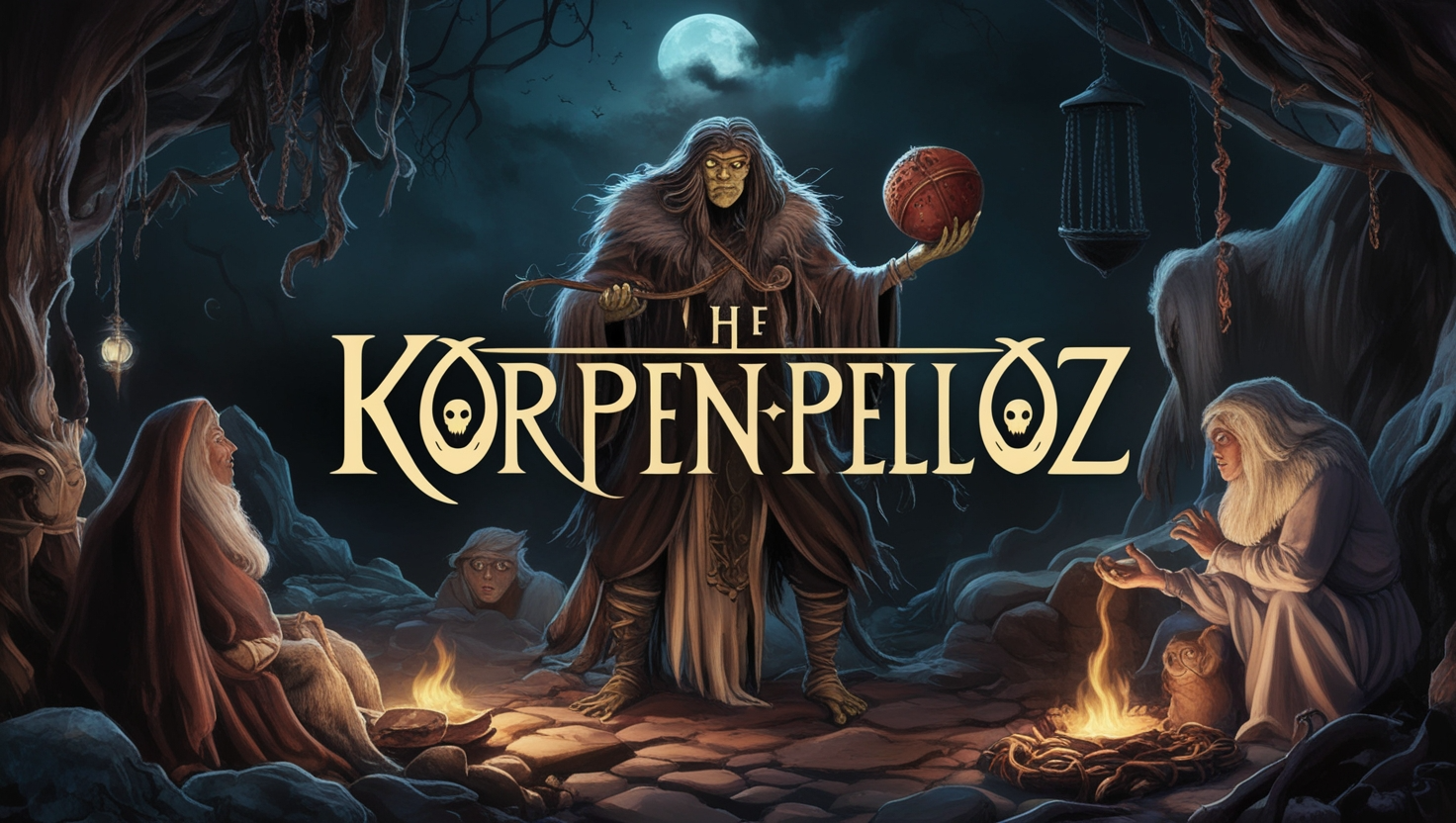Introduction
In the realm of folklore and supernatural tales, Korpenpelloz emerges as a figure of intrigue and mystery. The mysterious being entangles itself throughout mythical history, arousing interest in people who are exploring paranormal domains.
Origins and Cultural Significance
Korpenpelloz’s origins are shrouded in mystery, rooted deeply in ancient tales passed down through generations. Within folklore, the name Korpenpelloz connects spiritual guardians with ghostly entities that are seen only in mythical dimensions. Across different cultures and geographical regions, variations of Korpenpelloz appear, each imbued with unique attributes and symbolic meanings.

Description and Characteristics
Describing Korpenpelloz proves challenging, as accounts vary widely depending on the cultural context. Commonly depicted as a shadowy figure or a misty presence, Korpenpelloz is often associated with locations of natural beauty and profound spiritual significance. People who encounter Korpenpelloz describe mixed feelings between disturbing intimidation and profound respect and consider their meetings with it deeply impactful.
Mythical Encounters and Folkloric Accounts
Throughout history, encounters with Korpenpelloz have been documented in various forms, from ancient manuscripts to oral traditions passed down through generations. Historical narratives describe people meeting mysterious symbols carved into woods hea, ring-lost warnings blowing through the air, and detecting a phantom-like figure disappearing into the mist. Each encounter adds to the intricate tapestry of Korpenpelloz’s mythos, blending elements of fear, wonder, and the inexplicable.

Symbolism and Interpretations
The symbolism surrounding Korpenpelloz is rich and multifaceted, reflecting the complexities of human perception and belief. Some interpretations portray Korpenpelloz as a guardian spirit, watching over travelers and guiding them safely through unfamiliar territories. People view Korpenpelloz either as a protective watchman, which signals the upcoming journey of the observer or as a sinister omen that predicts anyone who sees it will encounter misfortune and tragedy. The dual aspects of symbolism in this legend emphasize the folklore principle that protection can both guard and endanger those who experience it.
Cultural Depictions and Artistic Representations
Across cultures, Korpenpelloz has inspired a myriad of artistic interpretations, from paintings and sculptures to literary works and contemporary media. Artists and writers embrace the mystery to portray existentialism through their creations, along with portraying themes about death and the circumstances of living with the unknown. The cultural appearances of this entity demonstrate its long-lasting attraction and the persistent human interest in paranormal beings.

Modern Interpretations and Contemporary Relevance
In contemporary times, Korpenpelloz continues to resonate with audiences seeking to understand the intersections of myth, psychology, and cultural heritage. Experts, in addition to common individuals, explore where this mystical force originated before revealing multiple symbolic layers with insights about everlasting truths as well as constant fears. Through its flexible nature across different platforms, it proves its status as a cultural template that evolves with the changing perspectives of human consciousness.
Conclusion
Korpenpelloz stands as a testament to the enduring power of folklore and myth to shape our understanding of the world and ourselves. The entity transcends both human epochs and cultural boundaries since people view it simultaneously as a being who protects otherworldly realms and a representation of existential fear. As we continue to explore the depths of myth and legend, Korpenpelloz remains an enigmatic figure, beckoning us to contemplate the unknown and embrace the complexities of our shared human experience.
FAQs about Korpenpelloz
Q: What is the origin of the name “Korpenpelloz”? A: The exact origin of the name remains unclear, but it is believed to derive from ancient dialects that have since faded from common usage. Various interpretations suggest connections to words meaning “watchful spirit” or “silent watcher,” reflecting its role in folklore as a guardian or observer.
Q: Is Korpenpelloz considered a benevolent or malevolent entity? A: Interpretations vary. Some cultures view Korpenpelloz as a protective spirit guiding travelers safely, while others portray it as a foreboding figure warning of imminent danger or misfortune.
Q: Are there specific regions or cultures where Korpenpelloz legends are more prevalent? A: Korpenpelloz tales span across cultures globally, with variations in depiction and interpretation. It is often associated with remote forests, mountains, or places of natural beauty where the boundaries between the mundane and the supernatural blur.
Q: How has Korpenpelloz been depicted in contemporary art and media? A: Artists and creators draw upon Korpenpelloz’s mysterious nature to explore themes of mystery, existentialism, and the human psyche in various forms of art, literature, and film. Its portrayal continues to evolve, reflecting contemporary anxieties and interpretations.
Q: What is the significance of encountering Korpenpelloz in folklore? A: Encounters with Korpenpelloz often serve as cautionary tales or moral lessons, highlighting themes of fate, mortality, and the unknown. Its presence in folklore underscores humanity’s perennial fascination with the supernatural and our quest for understanding beyond the visible world.
